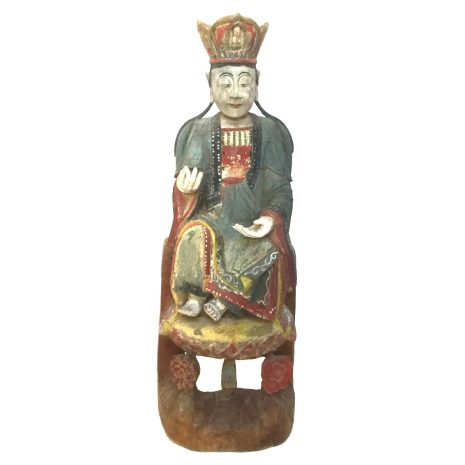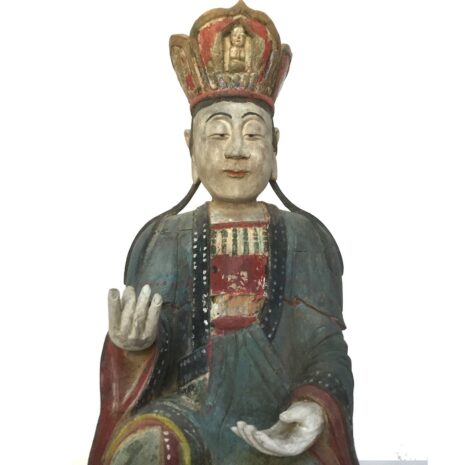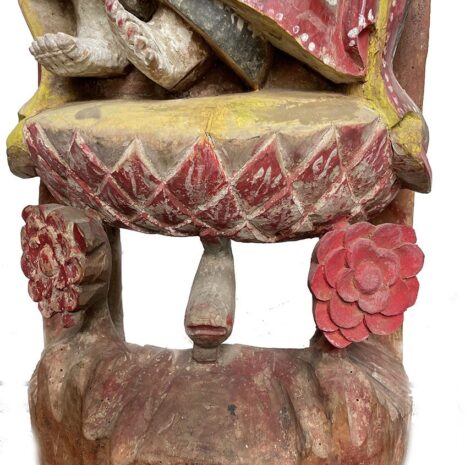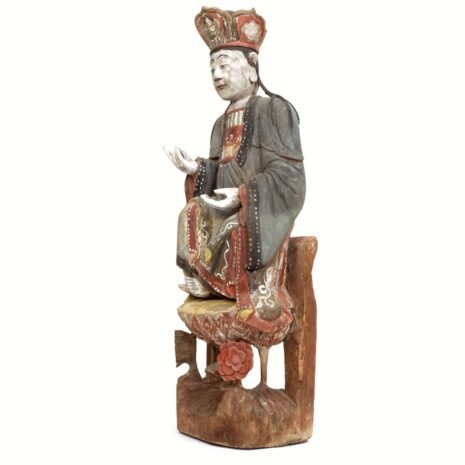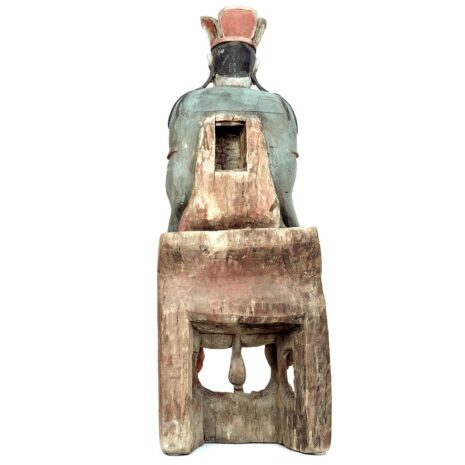SOLD Antique Large Provincial Guanyin on Lotus, China (16211)
Original price was: $4,200.00.$3,300.00Current price is: $3,300.00.
H: 31.75″ W: 11.25″ D: 6.5 | CALL 213-568-3030 OR EMAIL [email protected] FOR SHIPPING.
Large provincial Guanyin is natural and modest rather than idealized in relaxed lalitsana pose. Remarkable oversized crown centered with rustic Amitabha on a lotus with pointed aureole. This personalized depiction is a charming, innocent portrayal of a spiritual subject.
Out of stock
Description
The close association of the lotus and Guanyin (Sanskrit Padmapani meaning “born of the lotus,”) is depicted in this provincial image of her sitting on a flat, round open yellow lotus pedestal held up by a stem flanked by red lotuses. As one of the Great Chinese Goddesses (Irvin), she was a cult figure during the late Ming and Qing dynasties in Southern China, where modest images were made in less costly wood rather than more precious bronze, marble and stone. Local artisans created less formal images for less sophisticated populations by blending Buddhist, Taoist and Popular Folk Religion elements to create a new more engaging humble genre. In a Pure Land and folk-art tradition her face framed by pendulous ears is more human and humble than idealized.
The splendid oversized 5-lobed crown with gold and rounded borders is in the center lobe with a deeply carved rustic Amitabha Buddha on a lotus surrounded by a pointed aureole. Her lalitsana pose is relaxed with both legs bent and bare feet dangling above but not resting on the pedestal as is her less formal vitarka-mudra (teaching hand position). Provincial Buddhist statues are a wonderful earthy blend of spiritual and folk art ,but until recent times were viewed as lacking in artistic quality and not worthy of study or collected, a trend which has now been enthusiastically reversed. Many sources including the Princeton University Art Museum have observed pieces were sometimes repainted, redecorated and revitalized periodically often by Buddhist monks, probably the case for this piece which is in very good condition with expected paint and surface losses. The back cavity (bung) indicates it was consecrated.
Click here for the Blog Consecrating Wooden Images to Imbue Them with A Life Force
Source:
Lee Irwin, “Divinity and Salvation: The Great Goddesses of China,” in Asian Folklore Studies, Indiana University, Vol. 49, 1990, pp 53-68.
Additional information
| Place of Origin | China |
|---|---|
| Period | Antique, Qing Dynasty |
| Date | 18-19th Century |
| Materials and Technique | Wood |
| Dimensions (inches) | Ht: 31.75” W: 11.25” D: 6.5” |
| Dimensions (metric) | Ht: 80.64cm W: 28.57cm D: 16.51cm |
| Weight | 17 lbs |
| Condition | Very good, see description |
| Item Number | 16211WKME |
| Shipping Box Size | Oversized. Call 213-568-3030 or email [email protected] for shipping. |

